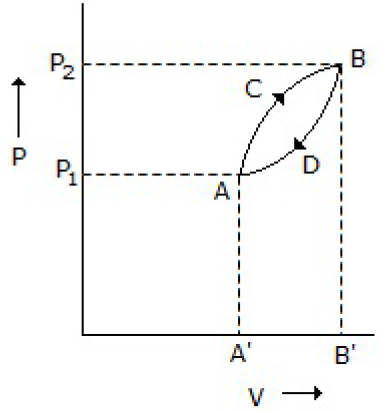Solubility of a substance which dissolves with an increase in volume and liberation of heat will be favoured by the
Low pressure and high temperature
Low pressure and low temperature
High pressure and low temperature
High pressure and high temperature
Correct Answer :
B. Low pressure and low temperature
Related Questions
The temperature at the eutectic point of the system is the __________ temperature that can be attained in the system.
Lowest
Highest
Average
None of these
The principle applied in liquefaction of gases is
Adiabatic expansion
Joule-Thomson effect
Both (A) and (B)
Neither (A) nor (B)
Charles' law for gases states that
V/T = Constant
V ∝ 1/T
V ∝ 1/P
PV/T = Constant
An isentropic process is carried out at constant
Volume
Pressure
Temperature
All (A), (B) and (C)
The theoretical minimum work required to separate one mole of a liquid mixture at 1 atm, containing 50 mole % each of n- heptane and noctane into pure compounds each at 1 atm is
-2 RT ln 0.5
-RT ln 0.5
0.5 RT
2 RT
In an ideal refrigeration cycle, the change in internal energy of the fluid is
+ve
-ve
0
Either of the above three; depends on the nature of refrigerant
For an ideal gas, the enthalpy
Increases with rise in pressure
Decreases with rise in pressure
Is independent of pressure
Is a path function
The melting point of paraffin wax (which contracts on solidification) __________ with pressure rise.
Increases
Decreases
Remains unchanged
Decreases linearly
The necessary condition for phase equilibrium in a multiphase system of N components is that the
Chemical potentials of a given component should be equal in all phases
Chemical potentials of all components should be same in a particular phase
Sum of the chemical potentials of any given component in all the phases should be the same
None of these
Enthalpy changes over a constant pressure path are always zero for __________ gas.
Any
A perfect
An easily liquefiable
A real
For a spontaneous process, free energy
Is zero
Increases
Decreases whereas the entropy increases
And entropy both decrease
What is the number of degree of freedom for a system of two miscible non-reacting species in vapor-liquid equilibrium forming an azeotrope?
0
2
1
3
Sound waves propagation in air exemplifies an __________ process.
Adiabatic
Isothermal
Isometric
None of these
At equilibrium condition, the chemical potential of a material in different phases in contact with each other is equal. The chemical potential for a real gas (μ) is given by (where, μ = standard chemical potential at unit fugacity (f° = 1 atm.) and the gas behaves ideally.)
μ° + RT ln f
μ°+ R ln f
μ° + T ln f
μ° + R/T ln f
Which of the following is not an intensive property?
Chemical potential
Surface tension
Heat capacity
None of these
Normal temperature and pressure (N.T.P.) corresponds to
0°C and 760 mm Hg
15°C and 760 mm Hg
20°C and 760 mm Hg
0°C and 1 kgf/cm2
It is desired to bring about a certain change in the state of a system by performing work on the system under adiabatic conditions.
The amount of work needed is path dependent
Work alone cannot bring out such a change of state
The amount of work needed is independent of path
More information is needed to conclude anything about the path dependence or otherwise of the work needed
On a P-V diagram of an ideal gas, suppose a reversible adiabatic line intersects a reversible isothermal line at point A. Then at a point A, the slope of the reversible adiabatic line (∂P/∂V)s and the slope of the reversible isothermal line (∂P/ ∂V)T are related as (where, y = Cp/Cv)
(∂P/∂V)S = (∂P/∂V)T
(∂P/∂V)S = [(∂P/∂V)T]Y
(∂P/∂V)S = y(∂P/∂V)T
(∂P/∂V)S = 1/y(∂P/∂V)T
Joule-Thomson experiment is
Isobaric
Adiabatic
Isenthalpic
Both (B) & (C)
If we increase the pressure on a substance (which is at its triple point), then the triple point
Increases
Decreases
Remains unchanged
May increase or decrease; depends on the substance
A thermodynamic system is taken from state A to B along ACB and is brought back to A along BDA as shown below in the P-V diagram. The net work done during the complete cycle is given by the area covered by

P1ACBP2P1
ACBB1A1A
ACBDA
ADBB1A1A
The main feature of Carnot refrigeration cycle is that, it
Does not need the addition of external work for its functioning
Transfers heat from high temperature to low temperature
Accomplishes the reverse effect of the heat engine
None of these
Claude gas liquefaction process employs cooling
At constant pressure
By throttling
By expansion in an engine
None of these
The compressibility factor of a gas is given by (where, V1 = actual volume of the gas V2 = gas volume predicted by ideal gas law)
V1/V2
V2/V1
V1 - V2
V1.V2
Refrigeration capacity of a household refrigerator may be round about __________ tons.
0.15
1.5
4.5
6.5
The standard Gibbs free energy change of a reaction depends on the equilibrium
Pressure
Temperature
Composition
All (A), (B) and (C)
Compressibility factor for almost all the gases are approximately same at the same
Pressure and temperature
Reduced pressure and reduced temperature
Critical pressure and critical temperature
None of these
An isolated system can exchange __________ with its surroundings.
Matter
Energy
Neither matter nor energy
Both matter and energy
Which of the following decreases with increase in pressure?
Melting point of ice
Melting point of wax
Boiling point of liquids
None of these
What is the value of maximum COP in case of absorption refrigeration, if refrigeration provided is at temperature, TR (where, T1 and T2 are source & surrounding temperatures respectively.)?
TR/(T2 - TR) × (T1 - T2)/T1
TR/(T2 - TR) × T1/(T1 - T2)
TR/(T1 - TR) × (T1 - T2)/T1
None of these
